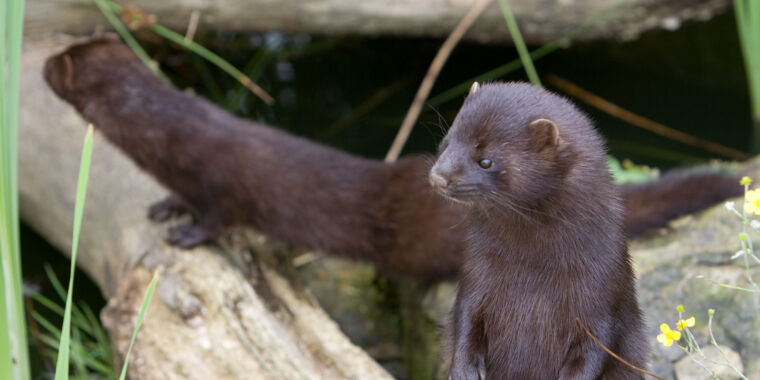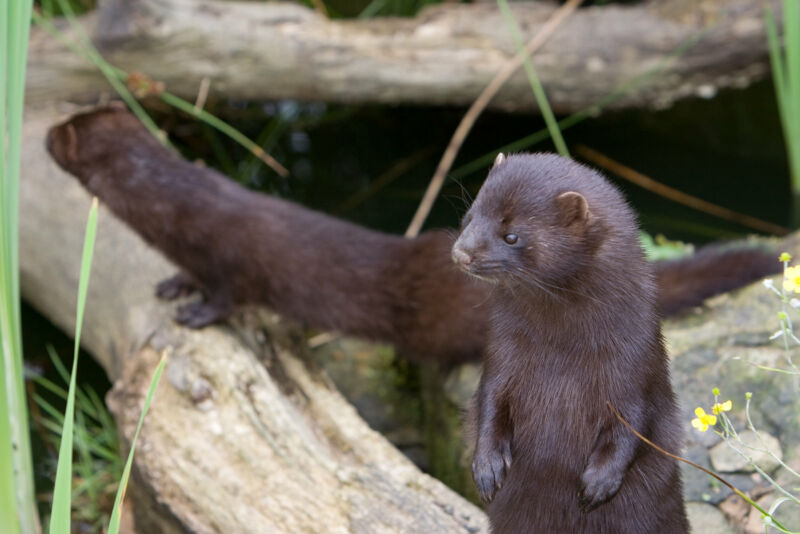
[ad_1]

It is still unclear which species carried the SARS-CoV-2 coronavirus that entered humans. But it has become increasingly clear that we can spread it to a large number of species, and a subset of those species is then able to pass it on to others. If these species are able to transmit it to humans, this adds to the risk posed by the COVID-19 pandemic. This is because it provides a route for new infections which bypasses all the means we use to try to control the spread of the virus between humans. And there is also the possibility that the reproduction of the virus within an animal species selects for a mutation that would make the virus more dangerous to humans.
While we’ve already found the virus in cats and dogs, the big risk so far has turned out to be an unexpected source: mink. By August, it was clear that the virus was killing many animals in American mink farms. Earlier this month, the discovery that the virus had spread from mink to humans prompted Denmark to decide to cull its entire mink population. Now, with some people at their wit’s end due to this drastic action, we have a report that provides a detailed trace of the spread of the virus between mink and humans, giving us a better idea of the risks involved.
And back again
The work was carried out in the Netherlands, which is also home to a significant number of mink farms. The new document, written by public health officials and veterinarians, is essentially the equivalent of a contact tracing report done for mink. It uses a combination of diagnostics to identify people and animals that have been exposed to SARS-CoV-2, whole genome sequencing to understand the source of these infections, and interviews (limited to humans) to help determine actions that could influence the spread of the virus.
Overall, researchers were able to trace infections across 16 different farms, although in at least one case two farms had the same owner and shared workers. The researchers were also able to compare the genomes of the viruses found on these farms to a panel of more than 1,700 viral genomes found in the general population of the Netherlands.
The first thing that emerges clearly from the investigation: the virus is widespread among farm workers. Of the approximately 100 people tested, 68% were currently infected or had antibodies indicating a previous infection. A number of people were known to have had a case of COVID-19 or said they had respiratory symptoms during interviews.
Samples were taken from people with active infections and the entire genome was sequenced, allowing researchers to reconstruct its evolutionary history. In each of these cases, the farm workers carried a virus that was most closely related to the strains known to circulate in mink. This indicates that these workers were picking up SARS-CoV-2 from the animals in their care. Furthermore, it was clear that many farms had separate infections, suggesting that the virus had spread from humans to mink several times.
Stay on the farm
This is the bad news. The good news is that it doesn’t seem to be spreading much from farm workers to the general population. The researchers identified 34 infected people from the same postal codes as the mink farms and also sequenced the genomes of their viruses. In any case, these viruses resembled those generally circulating among the human population of the Netherlands rather than those common in mink farms. In just one case, did one of the workers spread a strain of SARS-CoV-2 from mink to someone they spent time with.
(Many workers on mink farms in the Netherlands are from Poland, but the viruses circulating in that country were even further away.)
Does the virus appear to adapt to mink in a specific way? Not obviously, depending on the footage available. The 16 farms grouped into five distinct groups of related viruses do not appear to have many common mutations, as one would expect for a virus adapting to a new species. And for the most part, the viruses that returned to humans from mink simply looked like variants of those in mink.
The only thing that might suggest an additional risk of having the virus in mink is that it appears to detect mutations with the animal at a somewhat faster rate than in humans. But due to the great uncertainties about when infections in mink farming started, it will take a lot more data before we can say anything with confidence.
Hooray?
So overall, the news is pretty reassuring. While it is clear that mink can return the virus we gave it to us, this has not led to widespread infections in the communities around the mink farms. It’s obviously worth trying to determine if workers took precautions that helped limit the spread of their infections – something the interviews the researchers gathered can no doubt address.
The other good news is that the virus does not appear to have accumulated any mutations that clearly help it adapt to this species. This can clearly change over time, so we will want to continue monitoring these farms. But in the absence of this, the presence of the virus in mink does not appear to pose a dramatic threat to humans. Obviously, we’ll want to research any data collected in Denmark or other countries with large mink farms to see if the data is consistent with that. But if so, it will be very reassuring.
Science, 2020. DOI: 10.1126 / science.abe5901 (About DOIs).
[ad_2]
Source link